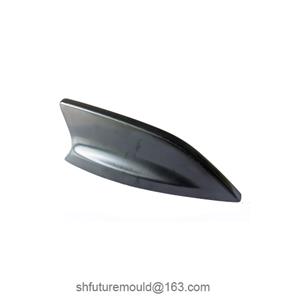Structure and Basic Principles of Three-Plate Injection Molds
Three-plate injection molds are a common type of injection mold. Compared to two-plate molds, they include an additional plate, the "runner plate" or "center plate," which allows for more complex gating system layouts and higher automation efficiency in production.
1. Basic Structure of Three-Plate Injection Molds
Three-plate molds primarily consist of the following components:
Fixed Mold Section
This includes the fixed mold base plate, fixed mold clamping plate, and center plate.
The center plate separates the product from the gating system, allowing for independent ejection of the gate.
Movable Mold Section
Includes the movable mold clamping plate and the movable mold base plate.
When the movable and fixed mold sections close, they form the cavity for injection molding. After injection, the mold opens to release the product.
Mold Frame System
It is composed of guide pins, bushings, and support pillars, ensuring precise alignment between the fixed and movable molds.
Gating System
Consists of the sprue, runners, and gates. The gating system is typically distributed on the center plate, which separates the gate from the product during the mold-opening process.
Ejection System
Includes ejector pins, return pins, and ejector plates, ensuring smooth ejection of both the product and the gating system.
2. Basic Principles of Three-Plate Injection Molds
The operation of three-plate molds can be divided into the following steps:
Injection Phase
The movable and fixed mold sections close, and molten plastic is injected into the cavity, forming the product and the gating system.
Cooling Phase
The plastic cools and solidifies within the mold, ensuring the product’s shape and dimensional stability.
Mold Opening Phase
The mold opens in two steps:
Step 1: The center plate moves first, separating the gating system from the product.
Step 2: The movable mold section continues to open, fully releasing the product from the cavity.
Ejection Phase
The ejector plate pushes the product and gating system out of the mold, allowing them to be separately collected or processed.
3. Advantages of Three-Plate Injection Molds
Flexible Gating System Design
Suitable for multi-point or edge gating, enhancing product quality and enabling the production of complex parts.
Automated Ejection
The gating system and product can be ejected independently, reducing manual operations and improving production efficiency.
Ideal for Precision Parts Production
Supports high-precision and uniform injection molding in multi-cavity production.
Three-plate injection molds are especially effective for manufacturing intricate, high-quality products, offering flexibility in gating system design, automation in production, and suitability for multi-cavity, precision molding applications.




